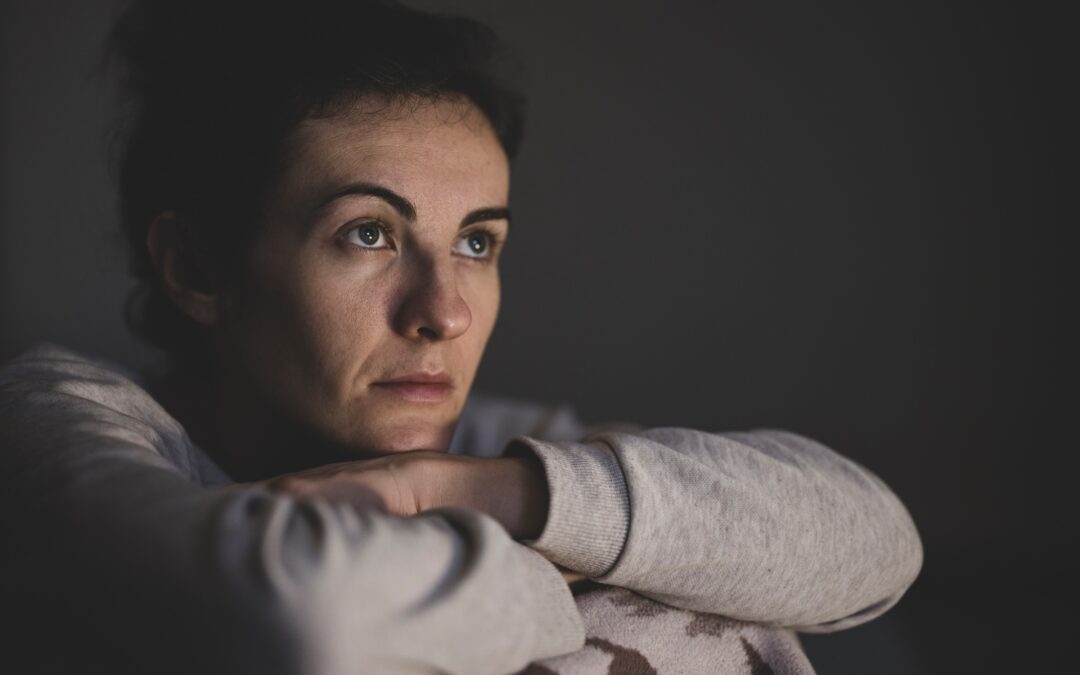One major symptom of endometriosis that is often overlooked and under-appreciated is fatigue. Endometriosis-related fatigue is shown to be one of the most debilitating symptoms of the disease, leading to significant distress (1). Even accounting for other causes of fatigue (and there are many beyond endometriosis), it seems that about half of endometriosis sufferers describe fatigue as a major symptom and that is about twice as many as for other conditions that may lead to fatigue (1). Despite it being commonplace in endometriosis, fatigue is rarely researched or considered part of the make-up of the diagnosis for endometriosis (2). This leads to substantial impact on health outcomes, for those with endometriosis and there are a myriad of reasons it could be present. In this blog, we will consider pain and stress as two major factors contributing to fatigue in endometriosis.
Pain causing fatigue
The experience of pain is an obvious reason that one might feel fatigued. As the central clinical feature of endometriosis, pain presents in various ways for women with the condition (3). Pain can occur around periods, though also commonly occurs at other times throughout the month . Endometriosis-related pain is frequently explored in research and could be due to local inflammation, direct nerve-related damage from endometriosis lesions and alterations in the way our nervous system processes pain signals (4). Fatigue is frequently associated with the experience of pain in endometriosis (5-6), which shows that pain could be one of the most important factors in the likelihood of experiencing endometriosis-related fatigue. However, there are other factors and stress cannot be overlooked in both the development of pain and relative fatigue.
Stress and pain
Stress is a feeling of tension that can rise from challenges and demands in life. Alterations in the way our brain talks to our adrenal glands (the ‘stress glands’), also called the hypothalamic pituitary adrenal (HPA) axis, can lead to chronic pain conditions (4). This could be related to the stress hormone, cortisol, which is released by our adrenal glands to help us deal with stressful situations. Research has shown considerable variations in cortisol levels in women with endometriosis – both higher cortisol levels, which could mean they are adapting to increased stressors adequately (7) but also lower cortisol levels, suggesting a poorer response to stress (4). It seems that the HPA axis function could be affected in women with endometriosis, impacting their ability to deal with stress, and this could influence different types of pain they experience, as well as lead to fatigue (8). The psychological and social burdens of endometriosis could also lead to emotional stress, which simply adds to and continues the fatigue.
Stress causing fatigue
Endometriosis can be a stressful experience for women due to a number of reasons. Firstly, there is delay in diagnosis. It can take anywhere from 4 to 7 years before having endometriosis confirmed (8-9). This could be due to the variability of endometriosis and general consensus of menstrual irregularities being ‘normal’. Secondly, endometriosis can interfere with one’s ability to carry out tasks in their day-to-day lives and as such affects their quality of life. It can affect their ability to do housekeeping duties, perform at work, complete tertiary degrees, show up in their relationships and impair their sex-life (10). Thirdly, 1 in 3 of women with endometriosis may have issues becoming pregnant, which is a significant emotional burden that can lead to feelings of inadequacy and potential relationship breakdown (11). Finally, body image can be affected due to associated weight gain, sensations of bloatedness and skin irregularities. This collection of stressors, with or without endometriosis-related pain, can lead to poor sleep (11), negatively impacting energy even further. In this way, it is no surprise that women with such burdens to bear are shown to have higher rates of fatigue.
Psychological and mind-body interventions
Psychological factors seem to be important in moderating pain perception in endometriosis (11). As stress is shown to be an exacerbating factor in the progression of endometriosis (12-13), it is also important to consider ways of reducing mental burden and improving the ways in which women navigate their experience of the condition so that it does not worsen. Psychological and mind-body interventions have shown promise in reducing both pain and distress in women with endometriosis, whilst also improving fatigue states (12). Talk therapy and cognitive-behavioural-therapy (CBT) help women to express how they are feeling and address their concerns, with guidance and tools provided to support them. Mind-body interventions such as acupuncture, hypnosis and yoga have the potential to support the mind and body in adapting to stress, as well as helping to reduce inflammation (14-15). These non-medical interventions could play a role in reducing fatigue alongside medical and surgical intervention or as an alternative for some people. Given the relationship between endometriosis and associated anxiety and depression, these interventions could really improve quality of life for women experiencing multiple issues simultaneously (15-16).

Summary
Endometriosis is multifaceted and because its impact is wider than just menstrual symptoms, it needs greater attention. Pain is a common symptom, which has a complex relationship with stress. Inflammation, our stress response and central nervous system pain processing all play a role in how symptoms present for women with endometriosis. Further, stressors associated with the condition can be a real challenge for women. The myriad of pain and psychological symptoms expose women to experiencing endometriosis-related fatigue, a debilitating, yet often discounted symptom of endometriosis. Therefore, it could be beneficial to address fatigue in patient case management for better patient outcomes. In order to address fatigue, psychological and mind-body interventions such as CBT and yoga could be promising due to the potential role they play in reducing stress, inflammation and pain. Written by, Claire Hargreaves Photo by Engin Akyurt References 1. Ramin-Wright, A., Schwartz, A. S. K., Geraedts, K., Rauchfuss, M., Wölfler, M. M., Haeberlin, F., von Orelli, S., Eberhard, M., Imthurn, B., Imesch, P., Fink, D., & Leeners, B. (2018). Fatigue–a symptom in endometriosis. Human reproduction, 33(8), 1459-1465. 2. Riazi, H., Tehranian, N., Ziaei, S., Mohammadi, E., Hajizadeh, E., & Montazeri, A. (2015). Clinical diagnosis of pelvic endometriosis: a scoping review. BMC women’s health, 15(1), 1-12. 3. Maddern, J., Grundy, L., Castro, J., & Brierley, S. M. (2020). Pain in endometriosis. Frontiers in Cellular Neuroscience, 14. 4. Morotti, M., Vincent, K., & Becker, C. M. (2017). Mechanisms of pain in endometriosis. European Journal of Obstetrics & Gynecology and Reproductive Biology, 209, 8-13. 5. Ramin-Wright, A., Schwartz, A. S. K., Geraedts, K., Rauchfuss, M., Wölfler, M. M., Haeberlin, F., von Orelli, S., Eberhard, M., Imthurn, B., Imesch, P., Fink, D.. & Leeners, B. (2018). Fatigue–a symptom in endometriosis. Human reproduction, 33(8), 1459-1465. 6. Pokrzywinski, R., Soliman, A. M., Surrey, E., Snabes, M. C., & Coyne, K. S. (2020). Psychometric assessment of the PROMIS Fatigue Short Form 6a in women with moderate-to-severe endometriosis-associated pain. Journal of Patient-Reported Outcomes, 4(1), 1-10. 7. van Aken, M., Oosterman, J., van Rijn, T., Ferdek, M., Ruigt, G., Kozicz, T., Braat, D., Peeters, A., & Nap, A. (2018). Hair cortisol and the relationship with chronic pain and quality of life in endometriosis patients. Psychoneuroendocrinology, 89, 216-222. 8. Starr, L. R., Dienes, K., Li, Y. I., & Shaw, Z. A. (2019). Chronic stress exposure, diurnal cortisol slope, and implications for mood and fatigue: Moderation by multilocus HPA-Axis genetic variation. Psychoneuroendocrinology, 100, 156-163. 9. Singh, S., Soliman, A. M., Rahal, Y., Robert, C., Defoy, I., Nisbet, P., & Leyland, N. (2020). Prevalence, symptomatic burden, and diagnosis of endometriosis in Canada: cross-sectional survey of 30 000 women. Journal of Obstetrics and Gynaecology Canada, 42(7), 829-838. 10. Nnoaham, K. E., Hummelshoj, L., Webster, P., d’Hooghe, T., de Cicco Nardone, F., de Cicco Nardone, C., … & Study, W. E. R. F. G. (2011). Impact of endometriosis on quality of life and work productivity: a multicenter study across ten countries. Fertility and sterility, 96(2), 366-373. 11. Evans, S., Fernandez, S., Olive, L., Payne, L. A., & Mikocka-Walus, A. (2019). Psychological and mind-body interventions for endometriosis: A systematic review. Journal of psychosomatic research, 124, 109756. 12. Kawakita, T., Kato, T., Iwasa, T., Erdenebayar, O., Kadota, Y., Kasai, K., Yoshida, K., & Irahara, M. (2020). Mental stress promotes the proliferation of endometriotic lesions in mice. Cytokine, 135, 155222. 13. Luisi, S., Pizzo, A., Pinzauti, S., Zupi, E., Centini, G., Lazzeri, L., Di Carlo, C., & Petraglia, F. (2015). Neuroendocrine and stress-related aspects of endometriosis. Neuroendocrinology Letters, 36(1). 14. Gonçalves, A. V., Barros, N. F., & Bahamondes, L. (2017). The practice of hatha yoga for the treatment of pain associated with endometriosis. The journal of alternative and complementary medicine, 23(1), 45-52. 15. Agarwal, S. K., Foster, W. G., & Groessl, E. J. (2019). Rethinking endometriosis care: applying the chronic care model via a multidisciplinary program for the care of women with endometriosis. International journal of women’s health, 11, 405. 16. Laganà, A. S., La Rosa, V. L., Rapisarda, A. M. C., Valenti, G., Sapia, F., Chiofalo, B., Rossetti, D, Frangez, H. B., Bokal, E. V., & Vitale, S. G. (2017). Anxiety and depression in patients with endometriosis: impact and management challenges. International journal of women’s health, 9, 323.

